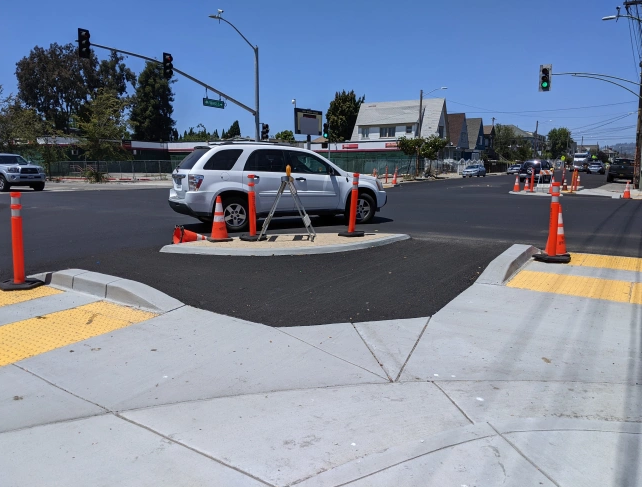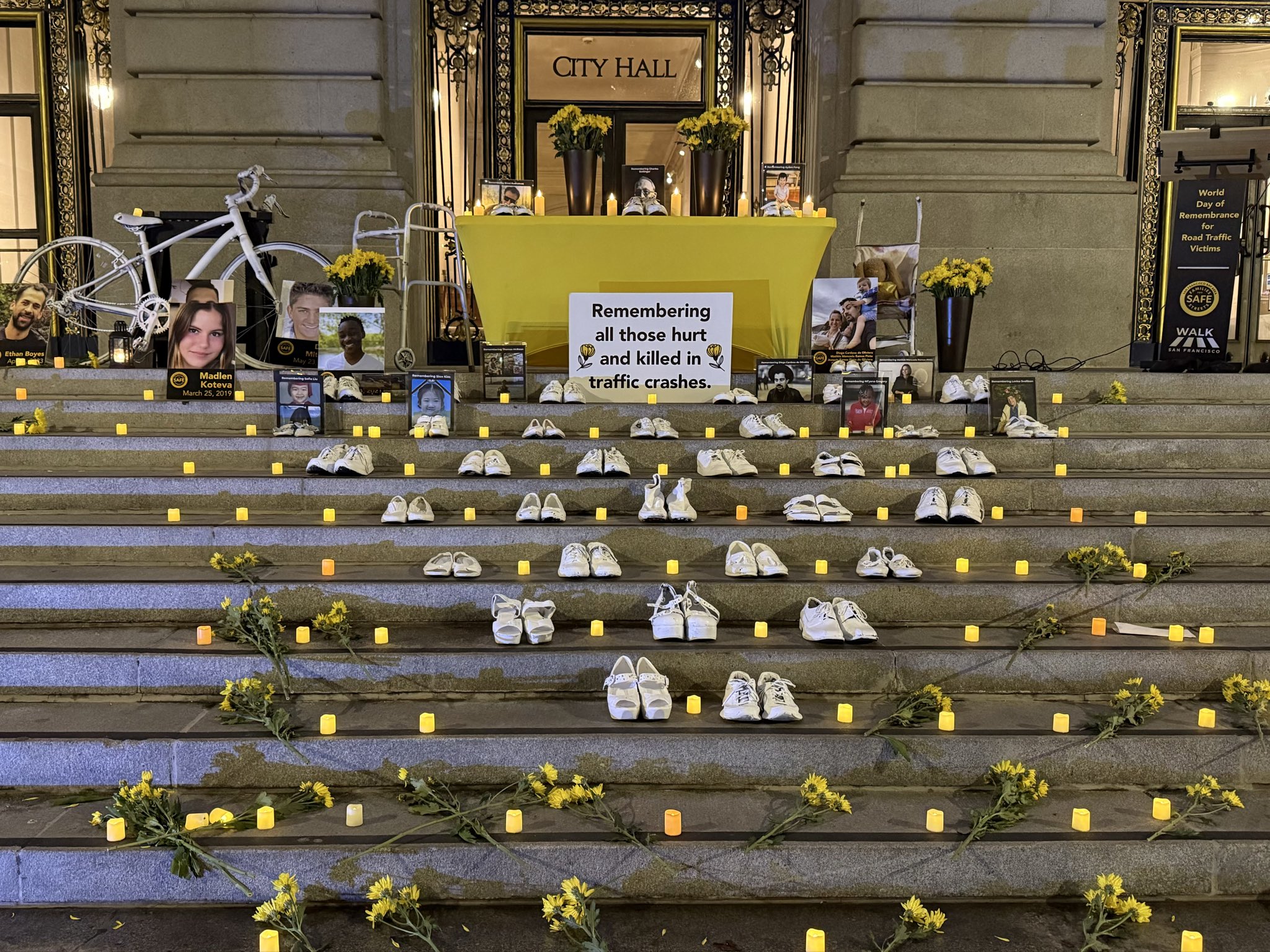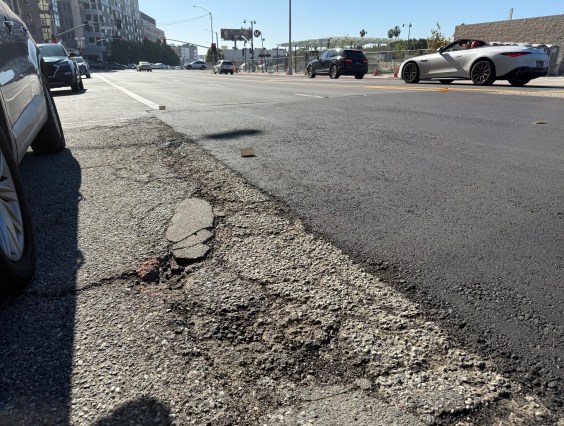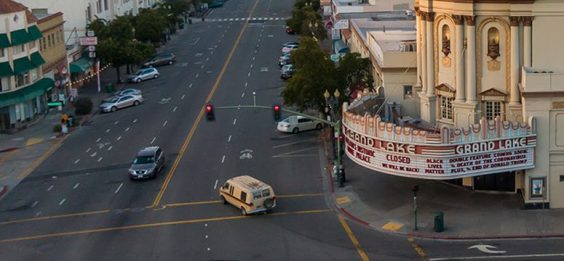Note: GJEL Accident Attorneys regularly sponsors coverage on Streetsblog San Francisco and Streetsblog California. Unless noted in the story, GJEL Accident Attorneys is not consulted for the content or editorial direction of the sponsored content.
Two recent stories highlight the need for a paradigm shift in how cities, and Oakland in particular, view and handle scofflaw parking, especially near intersections. The first is "Welcome to Safetyville" in Streetsblog USA, about Hoboken, New Jersey reducing speed limits, on top of its already impressive Vision Zero accomplishments. From Kea Wilson's post:
The move builds on the Mile Square City’s earlier success at completely eliminating traffic deaths within its borders — a feat the community has accomplished for a stunning four years and counting, even as car crash deaths spiked nationally throughout the pandemic. And while Hoboken is certainly unique for how many people it packs into its modest footprint — it has the fourth-highest population density of any U.S. city, including neighboring NYC — Streetsblog could not find another U.S. community of comparable population or land mass that had achieved that goal.
Hoboken attributes most of its success to one simple change: daylighting to maximize visibility at intersections. By banning parking close to corners, it's easier for pedestrians, cyclists, and motorists to see what's coming and avoid a deadly crash. Usually, Hoboken adds vertical posts, curb extensions, or even bike-share stations and other obstacles to make it all but impossible to park close to the corner.
Oakland has been daylighting intersections too.
But more often than not, daylighting consists of a red curb and a vain hope that motorists obey the rules. The Oaklandside did a great feature about how Oakland is finally trying to solve sidewalk parking, a related problem. The story recounts how the city, amazingly, threw in the proverbial towel a few years ago and even gave permission to residents of Trestle Glen to park on the sidewalk because, ostensibly, there isn't enough parking in that neighborhood.
But sidewalk and other forms of scofflaw parking are hardly limited to Trestle Glen. My own neighborhood, Jack London Square, has entire floors of mandated parking in every apartment building, enormous surface lots, dedicated, multi-floor parking structures, and street parking on every single block. And yet sidewalk parking is ubiquitous.
Sidewalk parking, egregious though it may be, isn't even the biggest problem. Motorists continually park in the daylighted red zones at intersections, in addition to blocking crosswalks and double parking on bike lanes. Enforcement is a joke, as illustrated below:
To point out the obvious, Oakland can paint all the red zones it wants. It doesn't make anyone safer if motorists still park there.
Which gets back to the success story in New Jersey. Yes, Oakland has seven times the population of Hoboken, but it also has about 30 fatal crashes every year, with a steady uptick in the number of deaths. Population and land area differences don't begin to explain Oakland's crash rate.
But maybe Oakland's complete inability to keep daylight zones clear starts to.
To its credit, Oakland has done some great marquee projects such as Telegraph, West Street in the lead image, and on some of the most notorious intersections along San Pablo where they built some solid solutions to tighten corners and keep them clear of illegally parked cars. But more often than not, they seem to think a red curb is enough to keep intersections safe.
Let's hope Oakland's novel determination to crack down on sidewalk parking is sincere. But let's also hope they start to keep intersection sightlines clear through real daylighting, using curbs and concrete obstacles, like in the lead image and the one above. Because as a little city in New Jersey has shown, daylighting of intersections works: officials just need to realize that as long as motorists can physically park in red zones, they will.






